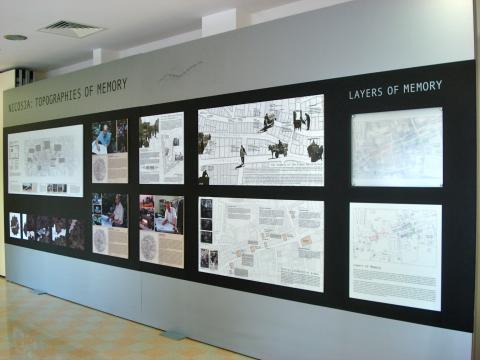Anita Bakshi
Year submitted: 2012
Supervised by: Prof Wendy Pullan
This dissertation explores urban memory in Nicosia, the divided capital of the Greek-Cypriot and Turkish-Cypriot sides of Cyprus. It examines the dialectics of remembering and forgetting, and of memory and history, as they relate to urban praxis and the image of the city from the 1950s to the present. There are important reciprocities between conflict and memory, which often become embedded in disputed places or territories central to ethnonational conflicts. In contested environments the state will often emphasize historical narratives that dictate what is officially remembered, while relegating other chronologies and perspectives to the realm of the forgotten. Additionally complicating our understandings of Nicosia are two divergent historical narratives - Greek-Cypriot and Turkish-Cypriot - which render the city in radically different ways.
This dissertation will focus on personal memories and imaginings related to Nicosia’s walled city center and the Buffer Zone that divides it. The Buffer Zone has been an uninhabited no-man’s land since 1974; once the city’s vibrant and diverse commercial center it is now an ‘urban absence.’ This research interrogates personal memories of shopkeepers who once worked there to develop a chronological reconstruction of everyday life in the area, as it changed from a mixed marketplace to a contentious frontier. The nature of coexistence or conflict is reassessed in light of new primary material collected through interviews that have been heavily reliant on visual materials and mapping to prompt and document memories related to daily urban practices.
The approach situates a reading of these two sites within the context of recent scholarly explorations of the boundaries between memory and history, examining in Nicosia the interchange between personal memories about the city and official histories. Paul Ricoeur’s term, the ‘reserve of forgetting,’ is developed in relation to place, exploring its capacity to hold the apparently ‘forgotten’ and to serve as an additional resource for the study of contested environments. Memories of praxis, retrieved from the ‘reserve,’ are contrasted with the image or representation of the walled city, exploring how the image obscures other versions of the past, enabling forgetting. The study concludes with an analysis of how the powerful narratives and images associated with these two sites continue to inform contemporary attitudes and spatial practices in the city.


